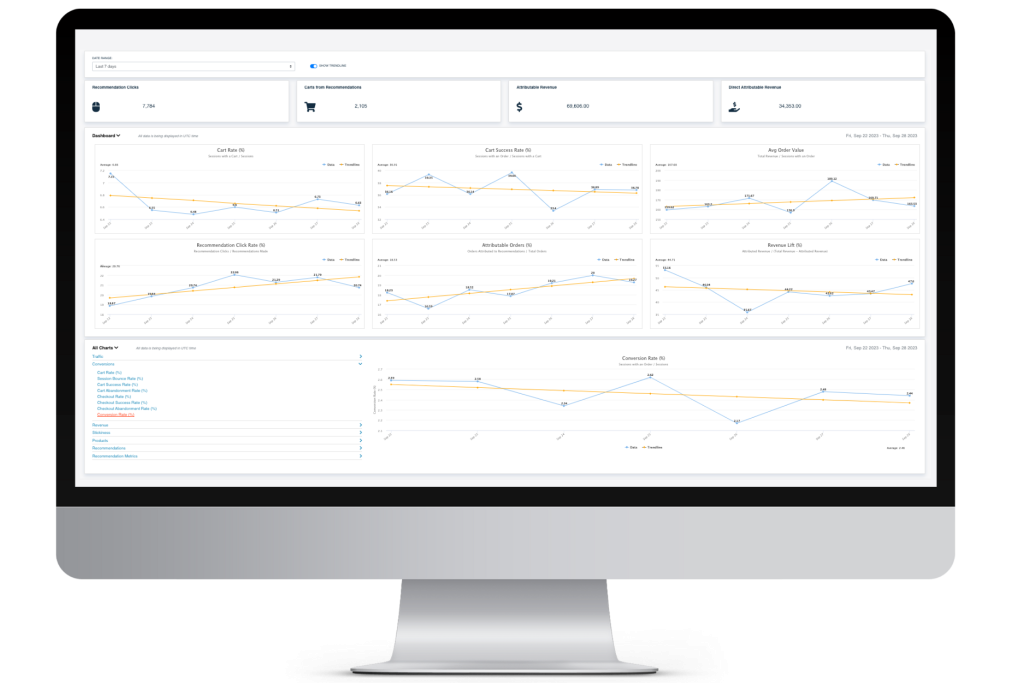Measuring ROI: Evaluating the success of ecommerce personalization
Ever feel like you’re throwing darts in the dark when it comes to your ecommerce personalization efforts? You invest time, money, and resources but can’t quite see if they are paying off?
Personalization has become a cornerstone of customer engagement and satisfaction. Tailoring the shopping experience to individual preferences can significantly boost sales and customer loyalty. However, to justify the investment in personalization efforts, ecommerce businesses need to measure their return on investment (ROI) effectively
The role of personalization in ecommerce success
As ecommerce businesses expand their horizons, the quest for personalizing customer experiences has taken center stage. Why should we assess the profitability of personalizing customer experiences in ecommerce? Let’s take a deep dive into it.
Ecommerce personalization is no longer just a nice-to-have feature — it’s now an essential element that contributes significantly to the success and growth of online businesses. The process involves tailoring customers’ shopping experience based on their past behavior, preferences, and data analysis. This personalized approach can increase not only conversion rates but also overall customer satisfaction.
A successful ecommerce business recognizes each visitor as unique, giving them exactly what they need makes sure they stick around longer and buy more often. Econsultancy research shows that 94% of companies agree that personalization ‘is critical to current and future success’. But implementing such tailored strategies isn’t without cost, time, effort, resources — and here’s where measuring ROI comes into play.
Making a business case for personalization
To convince stakeholders about investing resources into customization efforts requires presenting a compelling business case—one backed by hard numbers—that showcases how these endeavors contribute positively to your bottom line. Measuring ROI provides concrete evidence regarding which strategies work best so you can allocate your budget wisely while continuing improvement processes for better results over time.
Using ROI as a navigational tool, you can determine if your marketing strategies are on the right track or require adjustments to achieve better results. But how do we calculate it? Let’s consider this simple ROI formula: (Net Profit / Cost of Investment) x 100%.
In an ecommerce setting, ‘Net Profit’ could be defined by increased sales from personalized recommendations while ‘Cost of Investment’ might include expenses related to implementing and maintaining personalization tools or resources used in creating personalized content. The higher the percentage, the better your ROI — which translates into more successful ecommerce operations.
Key metrics for evaluating ROI
The return on investment (ROI) from ecommerce personalization is crucial to understand the effectiveness of your strategies. To get an accurate picture of your ROI, we need to dive into key metrics. It’s all about diving into specific metrics that paint a clear picture of your efforts.
Let’s start with conversion rate and average order value (AOV). These two are like Batman and Robin – they work together to provide insights into your personalization success. Your conversion rate, simply put, shows the percentage of visitors who complete a desired action on your site. Average order value (AOV), meanwhile, gives us an idea about customers’ purchasing behavior. This metric helps answer questions like: Are people buying more expensive items after receiving personalized recommendations? Is our strategy effectively increasing cart size?
Grasping the might of ROI in ecommerce personalization comes down to knowing your key numbers — conversion rate and AOV team up to showcase your wins.

Strategies for evaluating personalization success
Determining the success of your ecommerce personalization efforts is not a guessing game. With the right strategies, you can measure and optimize your personalization journey, ensuring a positive return on investment (ROI). Proto AI leverages next generation AI technology to deliver better, more accurate product recommendations that get measurable ROI.
One powerful strategy to gauge personalization success involves testing coupled with real-time analysis. These techniques allow you to dig deeper into audience behavior. The performance difference between these variations gives insight into what resonates more with customers.
In order to fully understand how effective our personalization strategies are at driving sales, we need tools that give us comprehensive insights about customer interactions. The Proto Analytics Dashboard includes quick, top-level reports in metrics such as AOV, Conversion Rate, Cart Success Rate, Attributable Purchases and more, along with a complete set of drill down reports that provide deeper insights.
Stepping into the world of ecommerce personalization without a roadmap can feel like a gamble. Measuring ROI is not just useful but critical for any successful ecommerce business. It helps us make smarter decisions about resource allocation and budget justification while continually improving our strategies.

